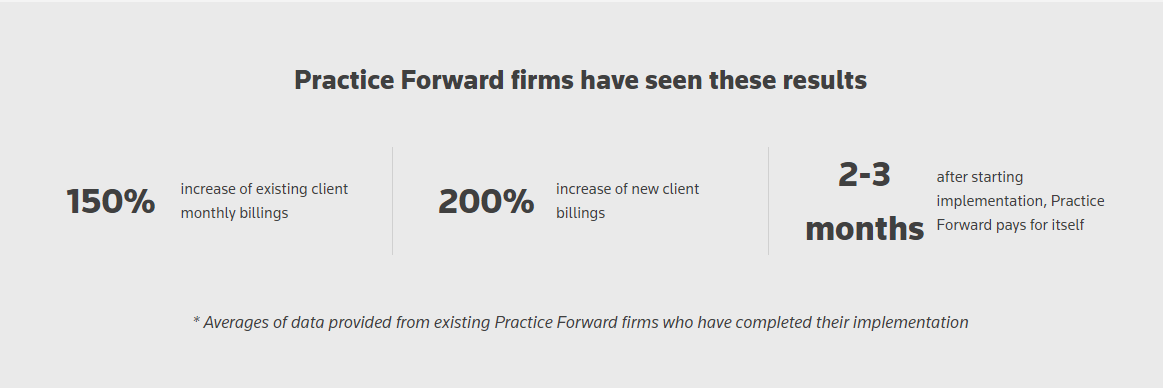By embracing the advantages that advisory services offer, accounting firms can significantly improve their success and remain competitive in this ever-changing industry.
Jump to:
| 1: Unlock the benefits of value-based pricing |
| 2: Gaining an advisory service advantage with client-centric services |
|
|
3: Getting ahead with Practice Forward |
As the accounting industry continues to evolve, it is important for accounting firms to understand the benefits that advisory services can offer. Not only can advisory services help drive growth and profitability for the firm, but they can also provide more value to clients. To help firms get started, this blog will provide three tips that will enhance their advisory services: value-based pricing, client-centric services, and utilizing Thomson Reuters Practice Forward ®. With these three tips, firms can effectively and efficiently move their services from transactional to advisory.
1: Unlock the benefits of value-based pricing
One of the key elements of successful advisory services is value-based pricing. Value-based pricing is a method of charging clients based on the value they perceive from your services, rather than the hours you spend or the costs you incur. Value-based pricing allows you to align your fees with the outcomes and benefits that your clients receive from your advice, rather than the inputs and efforts that you provide.
Value-based pricing has several advantages over traditional methods of pricing, such as:
-
- Creating a win-win situation for both you and your clients. You can charge higher fees for high-value services, while your clients can enjoy greater satisfaction and return on investment from your services.
- Eliminating the conflict of interest that arises when you bill by the hour or by the project. You no longer have to worry about over-servicing or under-servicing your clients, or justifying your time and expenses. Instead, you can focus on delivering quality results and building trust with your clients.
- Differentiating you from your competitors who may still use traditional pricing methods. You can position yourself as a strategic partner who understands and delivers value to your clients, rather than a commodity provider who sells time and tasks.
Implementing value-based pricing can be challenging, but there are several best practices that can help ensure successful implementation:
-
- Conduct a thorough analysis of the client’s needs and the benefits that your services provide. This will help you understand the value that your services offer to the client.
- Once you have a clear understanding of the value that your services provide, you can set prices that accurately reflect that value.
- Communicate the value of your services to the client, so that they can clearly see why they are paying the price that they are. Highlight the unique benefits that your services provide and how they can help the customer achieve their goals.
2: Gaining an advisory service advantage with client-centric services
Another way to improve your advisory services is to adopt a client-centric approach. This means that you focus on understanding and meeting the needs, preferences, and expectations of your clients. You also seek to build long-term relationships and trust with your clients, rather than treating them as one-time transactions. A client-centric approach can help you create more value and loyalty for your clients, as well as differentiate yourself from your competitors.
To become a client-centric advisor, you need to develop some skills and habits.
-
- Listen actively and empathetically to your clients. What are their stories, motivations, emotions, and concerns? How do they perceive their situations and challenges? How do they feel about your services and suggestions? By listening attentively and sincerely, you can show that you care about your clients and respect their perspectives. You can also identify their underlying needs and expectations that may not be expressed explicitly.
- Tailor your services and solutions to your clients. How can you customize your offerings to fit the specific goals, problems, opportunities, and constraints of each client? How can you leverage your expertise, experience, and resources to create value-added solutions that address the unique needs of each client? How can you deliver your services in a way that matches the preferred communication style, feedback frequency, and involvement level of each client? By tailoring your services and solutions, you can demonstrate that you understand your clients and appreciate their individuality. You can also increase the relevance and effectiveness of your services.
- Follow up and follow through with your clients. How can you maintain regular contact and communication with your clients throughout the service delivery process? How can you monitor the progress and results of your services and ensure that they meet or exceed the expectations of your clients? How can you solicit feedback from your clients and incorporate it into improving your services? How can you provide ongoing support and advice to your clients after completing a project or contract?
By following up and following through with your clients, you can show that you are committed to delivering quality services and achieving customer satisfaction. You can also foster lasting relationships and trust with your clients.
3: Getting ahead with Practice Forward
One way to follow up and follow through with your clients is to use Practice Forward, a cloud-based platform that helps you manage your workflow, track your performance, and communicate with your clients.
With Practice Forward, you can streamline your service delivery process, automate tasks and reminders, and access real-time data and insights on your projects. You can also create customized dashboards and reports that show the value of your services to your clients and help you identify opportunities for improvement.
Another benefit of using Practice Forward is that it enables you to communicate with your clients more effectively and efficiently. You can create secure client portals where you can share documents, messages, invoices, and feedback. You can also use the platform to schedule meetings, send notifications, and request information from your clients. By using Practice Forward, you can keep your clients informed and engaged throughout the service delivery process.
Practice Forward provides an essential blueprint for accounting firms to successfully transition from a transactional business model to one that is focused on delivering exceptional advisory services to their clients.
With over 190 tools, including proposal templates, pricing calculators, and checklists, as well as personalized consulting and support, Practice Forward helps firms unlock their true potential by increasing revenue, building strong and meaningful relationships, and creating a more fulfilling work environment.
Transform your business today with Practice Forward!
For more information on Practice Forward and advisory services, explore our resources below:
Product PageThomson Reuters Practice Forward Grow your accounting firm while helping clients better than ever. |
|
|
|
 |
|














